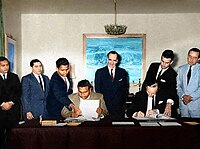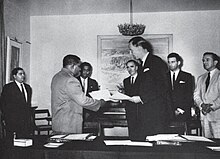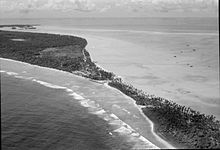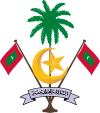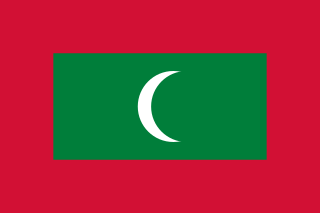
The Maldives, officially the Republic of Maldives, is a country and archipelagic state in South Asia in the Indian Ocean. The Maldives is named after the main island and capital of Malé. The Maldives is southwest of Sri Lanka and India, about 750 kilometres from the Asian continent's mainland. The Maldives' chain of 26 atolls stretches across the equator from Ihavandhippolhu Atoll in the north to Addu Atoll in the south.

The history of the Maldives is intertwined with the history of the broader Indian subcontinent and the surrounding regions, comprising the areas of South Asia and Indian Ocean; and the modern nation consisting of 26 natural atolls, comprising 1194 islands. Historically, the Maldives held a strategic importance due to its location on the major marine routes of the Indian Ocean. The Maldives' nearest neighbours are the British Indian Ocean Territory, Sri Lanka and India. The United Kingdom, Sri Lanka and some Indian kingdoms have had cultural and economic ties with the Maldives for centuries. In addition to these countries, Maldivians also traded with Aceh and many other kingdoms in, what is today, Indonesia and Malaysia. The Maldives provided the main source of cowrie shells, then used as a currency throughout Asia and parts of the East African coast. Most probably Maldives were influenced by Kalingas of ancient India who were earliest sea traders to Sri Lanka and the Maldives from India and were responsible for the spread of Buddhism. Stashes of Chinese crockery found buried in various locations in the Maldives also show that there was direct or indirect trade contact between China and the Maldives. In 1411 and 1430, the Chinese admiral Zheng He 鄭和 visited the Maldives. The Chinese also became the first country to establish a diplomatic office in the Maldives, when the Chinese nationalist government based in Taipei opened an embassy in Malé in 1966. This office has since been replaced by the embassy of the People's Republic of China.
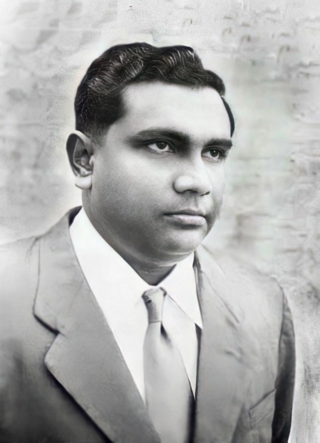
Al Ameer Ibrahim Nasir Rannabandeyri Kilegefan, KCMG, NGIV commonly known as Ibrahim Nasir, was a Maldivian politician adhering to the non-aligned ideology and staunch anti-imperialist. Nasir served as the Prime Minister of the Maldives from 1957 to 1968 under the monarchy, and later the first President of the Second Republic of Maldives from 1968 to 1978. Nasir served two terms, then he decided to retire, even though the People's Majlis voted him in for a third term. Nasir is remembered as an independence hero for guiding the Maldives to independence from the British Empire, he is also credited for establishing the tourism industry in the Maldives, as well as rapidly modernizing and developing the country and economy.
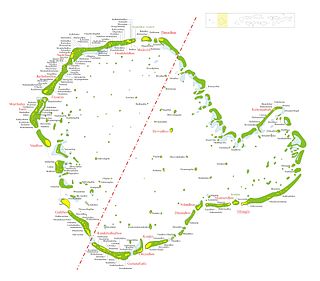
Huvadhu, Suvadive, Suvaidu or Suvadiva is the atoll with most islands in the world. The atoll is located in the Indian Ocean. It is south of the Suvadiva Channel in the Republic of Maldives with a total area of 3152 km2, of which 38.5 km2 is dry land. The atoll contains 255 islands.

Royal Air Force Gan, commonly known as RAF Gan, is a former Royal Air Force station on Gan island, the southern-most island of Addu Atoll, which is part of the larger groups of islands which form the Maldives, in the middle of the Indian Ocean. Its motto is En Route, which signifies its importance as a strategic staging post for enabling RAF aircraft to reach their onward destinations at their bases in the Far East.

Sumuvvul Ameer Mohamed Amin Dhoshimeynaa Kilegefaanu, popularly known as Mohamed Amin Didi, was a Maldivian politician. He served as the first president of the Maldives and as the head of government between January 1, 1953, and August 21, 1953. Amin Didi was also the principal of Majeedhiyya School from 1946 to 1953.
Addu City is a city in Maldives that consists of the inhabited islands of Addu Atoll, the southernmost atoll of the archipelago. Addu City is the second-largest urban area in Maldives, in terms of population, and is one of the two urban areas to get the status of "city" other than the capital city, Malé, and Fuvahmulah. Addu City has 6 districts. They are Hithadhoo, Maradhoo-Feydhoo, Maradhoo, Feydhoo, Hulhudhoo and Meedhoo. These divisions are naturally islands, but are well connected. In addition, Addu Atoll has other uninhabited islands.

King Muhammad Fareed Didi, , the son of the Sultan Prince Abdul Majeed Didi, was the last Sultan of Maldives and the first Maldivian monarch to assume the title of "King" with the style of "His Majesty". He was the Sultan of the Maldives from March 7, 1954, until July 26, 1965, and King of the Maldives from July 26, 1965, until November 11, 1968. He was deposed in 1968 from the throne when Maldives became a republic, and died the following year in Maldives.

Fuvahmulah is an island (atoll) in the Maldives. It is under Maldives’ administrative division of Gnaviyani Atoll. The island is the second southernmost administrative atoll, located to the south of Huvadhu Atoll and to the north of Seenu Atoll. It’s also the third most populous island after Malé and Addu.

Gadhdhoo, is the second most populated island in Gaafu Dhaalu Atoll. It has its own dialect of Dhivehi which is considerably different from northern and mid-Maldivian speech(more of a southern accent).

Thinadhoo City is the capital of Gaafu Dhaalu region in the atoll of Huvadhu and the proposed capital for the Upper South Province of the Maldives. It has its own dialect of Dhivehi which is considerably different from northern speech.
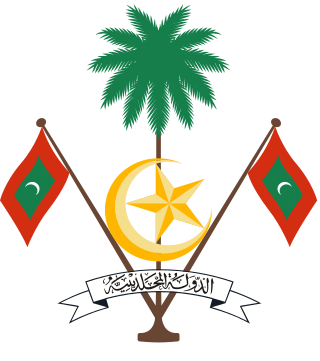
The President of the Republic of Maldives is the head of state and head of government of the Republic of Maldives and the commander-in-chief of the Maldives National Defence Force.

The United Suvadive Republic was a short-lived breakaway state from the Sultanate of Maldives between 1958 and 1963 consisting of the three southern atolls of the Maldive archipelago: Addu Atoll, Huvadhu Atoll and Fuvahmulah. The first president of the new nation was Abdulla Afeef Didi. The secession occurred in the context of the struggle of the Maldives’ emergence as a modern nation. The United Suvadive Republic inherited a Westminster system of governance cloned from Britain along with other institutional structures.

Abdullah Afeef was the only President of the United Suvadive Republic from 1959 to 1963. Born in Hithadhoo, Addu Atoll, Afeef was an educated and well-respected individual from a family of notables. Owing to his knowledge of the English language, he served as a translator to the British military at Gan airbase in the same atoll. His local name was Elha Didige Ali Didige Afeefu.
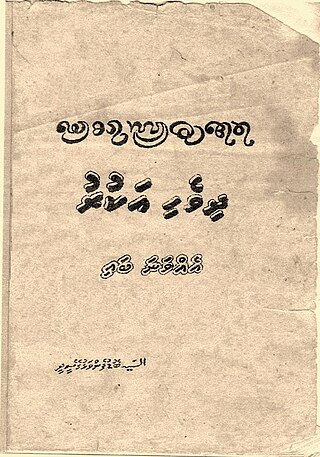
Bodufenvalhugey Sidi or Assayyidhu Bodufenvalhugey Seedhee (1888-1970), was a Maldivian intellectual and writer.
A referendum on taking military action to conquer the breakaway United Suvadive Republic was held in the Maldives in March 1959. The proposal was approved by voters. The official results were lost.

Abdul Sattar Moosa Didi was a Maldivian diplomat and politician. He was born 1936 or 1937. He died in November 2015 in Bangkok.

The depopulation of Havaru Thinadhoo was an event that took place in 1962, following the formation of the United Suvadive Republic, when Thinadhoo, the wealthiest island at the time was forcefully depopulated and destroyed.

The Sultanate of Maldives was an Islamic monarchy that controlled the Maldivian Archipelago for 815 years (1153–1968), with interruption.
The High Commission of the Maldives in Sri Lanka is an overseas embassy of the Maldives located in Colombo, the former capital and largest city in Sri Lanka.
